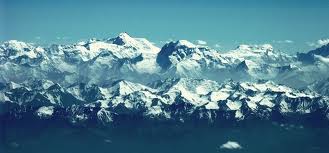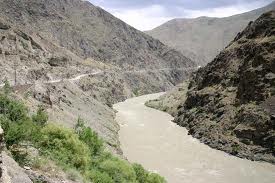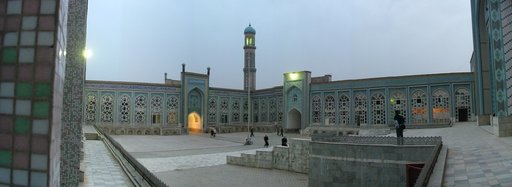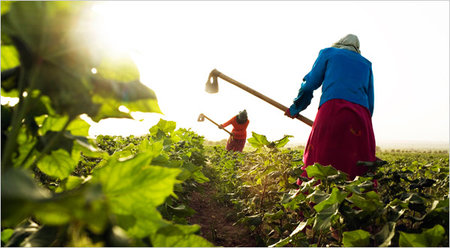
Tajikistan or officially known as the Republic of Tajikistan is mountainous landlocked country situated in Central Asia. Tajikistan stands bordered by China in the east, Uzbekistan in the west, Kyrgyzstan in the north and Afghanistan in the south. The name Tajikistan means the ‘Land of Tajiks’. Majority of the population of Tajikistan comprises of Persian speaking Tajiks. They share culture, language and history with Iran and Afghanistan. Dushanbe, the capital and the largest city of Tajikistan is situated in the western central region.
Being a landlocked country with an area of 143,100 sq. km, Tajikistan is the smallest nation in Central Asia. Tajikistan lies between latitudes 36° and 41°N and longitudes 67° and 75°E. The mountains of Pamir range cover 90% of Tajikistan and more than 50% if the country is over 9,800 ft above sea level. The low-lying areas are mostly situated in the northern part of Fergana Valley and in the Southern Vakhsh and Kofarnihon River valley that further form the Amu Darya River. The capital city of Dushanbe is situated on the southern slopes of Kofarnihon Valley. The Ismoil Somoni Peak at 24,590 ft is the highest point in Tajikistan, whereas the lowest point in the country is Syr Darya at 980 ft. Lakes in the country cover only 2% of the area. Syr Darya and Zeravshan are the two most important rivers of Tajikistan. Amu Darya and Syr Darya flow through the country, they are fed by most of the melting snow and glaciers from the mountains of Tajikistan and Kyrgyzstan. There are over 900 rivers in Tajikistan, which are longer than 10 km. Some of the largest rivers of Tajikistan are Amu Darya, Bartang, Gunt, Muksu, Murghab and Oksh.
Ismoil Somoni

Amu Darya Basin

The constitution of Tajikistan provides the freedom of religion to all its citizens according to their beliefs or culture. The population of Tajikistan comprises of 95% of the people to be the followers of Islam. The Muslim denominations are further divided into two sections: Hanafi Sunnis comprising of 90% of the total population and Islaimi Shiites comprising of 5% of the total population. The remaining 5% of the total population comprises of the followers of Russian Orthodoxy, Catholicism, Buddhism and Zoroastrianism. The largest Christian group in the country is Russian Orthodox, but there are also Roman Catholics, Lutherans, Korean Protestants, Seventh Day Adventists and Jehovah’s Witnesses. A significant minority of the population comprises of Baha’i, Hare Krishna’s and Jews. Majority of the Muslims in Tajikistan fast during Ramadan and about 10% of the population residing in the urban developed areas follow dietary restrictions and observe daily five time prayers. In Tajikistan, Registration and approval of religion and prayer site is required to ensure non-payment of fines or closure of the places of worship.
Mosque in Tajikistan

Church in Tajikistan

The traditional Tajik cuisine has many similarities to that of Afghan, Persian and Uzbek cuisines. Plov or also known as Osh throughout Central Asia is the national dish of Tajikistan. Green tea is the national drink among the beverages. Tea and bread are consumed for breakfast, whereas the people of elite group prefer consuming butter, jam or eggs. The traditional Tajik meal usually starts with dry fruits or halva and other sweets followed by a soup and meat that are ended by consuming plov. The national dish plov is a rice-based dish prepared with shredded yellow turnip, pieces of meat and carrot-which are further fried in vegetable oil. Every meal is usually accompanied by tea and is frequently offered to guests as a gesture of hospitality. Being the national beverage, the chaikhanas or tea houses are the most common gathering place for the men in Tajikistan. Meals are usually accompanied by Non or Naan, flat and round bread. The soups are mostly prepared using meat and vegetables. The other famous dishes of Tajikistan include Manti (steamed meat dumplings), Somsa (pastry filled with meat and onions) and belyash (deep fried cakes made of yeast dough and filled with meat). During the summers, the country is abundant in fruits and the bazaars overflow with fresh and natural fruits like apricot, pears, peaches, apples, berries and plums. The restaurants in the country offer western and Russian food.
Plov

Among the 15 former Soviet Republic, Tajikistan has one of the lowest per capita GDP. More than a million Tajik’s work abroad, mostly in Russia to support their families through remittances. The people residing in rural areas depend entirely on what they produce. Majority of the households grow food for their own use. Farmers in Tajikistan have difficulty in gaining access to land, as only 7% of the land is arable. The most important crop is cotton and its production is closely monitored. The civil war (1992-1997) damaged the existing weak economic infrastructure, resulting in the decline in industrial and agricultural production. Most of the people did not possess any specialized skills, most were Russians with specialized skills, but they too left after independence, which resulted in closing of most of the factories. For most of the basic needs, Tajikistan depends on international assistance. The primary sources of income in the country are cotton-growing, remittance from migrant workers and aluminium production. The country also has deposits of gold, antimony and silver. The growth of other food products is limited due to the dominance of cotton in the country. Some small-scale industries are involved in weaving and food processing that helps in contributing towards the economy. Other industries that help contributing towards the economy are chemicals, mining, metal processing and building materials. Exports include aluminium, machinery, textiles and cereals. Fruits and vegetables, paints and textiles are exported in barter for automobiles and other consumer goods. Central Asia and Europe are the major trading partners of Tajikistan. Over the years, the economic situation in Tajikistan remains Fragile due to corruption, weak governance and external debt burden.
Cotton production in Tajikistan

Red, white and green dominate the flag of Tajikistan. From top to bottom red, white and green appear in three horizontal stripes. The white stripe is broader than the red and green stripe. The white stripe comprises of a golden crown haloed by seven golden five pointed stars. The colour red represents the sun, victory and unity of the nation, while the white stands for cotton, purity and the mountain snows, whereas green is the colour of Islam and the bounty of nature. The golden crown in the centre symbolizes the Tajik people and the seven stars signify the Tajik magic number as ‘seven’ – a symbol of perfection and happiness.
G Kowledge of | 0 Comments >>
0 Comments
Leave Comment
Your email address will not be published. Required fields are marked.